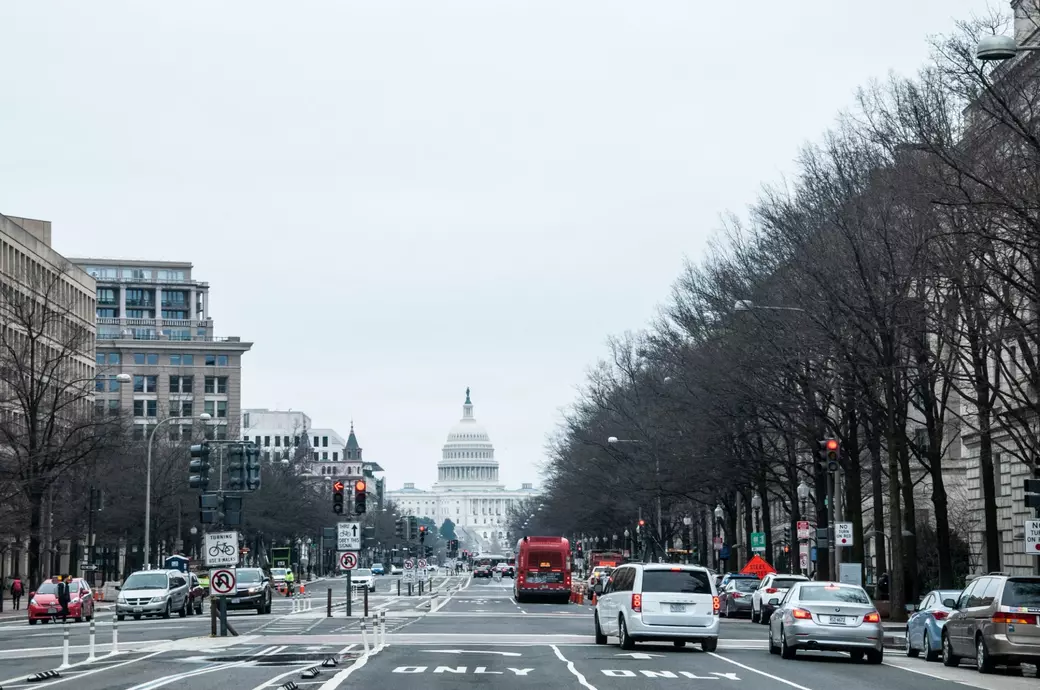Capitol Hill or Georgetown in Washington D.C.

Capitol Hill or Georgetown in Washington D.C.
Washington D.C., the capital of the United States, stands as a beacon of history, politics, and culture. Within its borders, two iconic neighborhoods, Capitol Hill and Georgetown, emerge as pillars of distinction and allure. Both possess unique charms and amenities, catering to diverse interests and lifestyles. This blog embarks on a journey to unravel the essence of Capitol Hill and Georgetown, offering insights to aid in the decision-making process for residents and visitors alike.
Keytakeaways
-
Historical Significance and Prestige: Capitol Hill boasts a rich in history and governance, serving as the political nucleus of the nation. Its iconic landmarks, including the United States Capitol and Library of Congress, resonate with centuries of political discourse and legislative action.
-
Cultural Charm and Sophistication: Georgetown exudes an aura of elegance and sophistication, with its cobblestone streets and Federal-style architecture lending a timeless charm to the neighborhood. Its vibrant cultural scene, marked by galleries, theaters, and boutiques, offers a glimpse into the city's artistic heritage.
-
Community Spirit and Engagement: Both Capitol Hill and Georgetown foster vibrant communities characterized by civic engagement and camaraderie. Residents of Capitol Hill come together to celebrate local traditions and engage in grassroots initiatives, while Georgetown's neighborhood associations promote a sense of belonging and connection among its diverse population.
-
Location and Accessibility: Capitol Hill's central location provides residents with easy access to key government institutions and downtown amenities, making it a prime choice for those immersed in the pulse of governance and activism. Meanwhile, Georgetown's waterfront setting offers a tranquil retreat from the bustle of city life, albeit with slightly longer commute times to central D.C.
-
Housing Options and Cost of Living: Both neighborhoods offer a diverse array of housing options, ranging from historic row houses to modern condominiums. However, housing costs tend to be higher in Capitol Hill due to its proximity to downtown and historical significance, while Georgetown's scenic ambiance commands a premium for its coveted waterfront views and historic charm.
Capitol Hill: Where History Meets Governance
As the political nucleus of the nation, Capitol Hill resonates with historical significance and governmental prominence. The majestic United States Capitol, an architectural marvel, commands attention as the legislative heart of the country. Surrounding it, historic row houses and tree-lined streets evoke a sense of nostalgia, reminiscent of a bygone era. The neighborhood pulsates with the energy of policymakers, lobbyists, and diplomats, fostering an atmosphere of dynamism and influence.
Beyond its political veneer, Capitol Hill boasts a vibrant community fabric. Eastern Market, a cherished landmark, invites visitors to peruse its stalls brimming with local produce, artisanal crafts, and delectable fare. Parks and green spaces dot the landscape, providing sanctuaries for relaxation and recreation. Residents cherish the sense of community camaraderie, forged through neighborhood gatherings and civic engagement.
Georgetown: Elegance and Sophistication
In contrast, Georgetown exudes a distinct aura of refinement and charm. Steeped in history and prestige, this picturesque neighborhood boasts cobblestone streets, Federal-style architecture, and the iconic waterfront along the Potomac River. The historic C&O Canal, once a bustling trade route, now serves as a scenic backdrop for leisurely strolls and waterfront dining.
Georgetown's allure extends beyond its aesthetic appeal. M Street and Wisconsin Avenue beckon with an eclectic array of boutiques, galleries, and renowned eateries, catering to discerning tastes and lifestyles. The neighborhood's cultural landscape thrives with theaters, art galleries, and museums, offering enriching experiences for enthusiasts of the arts and humanities.
Comparing Capitol Hill and Georgetown: Deciphering the Dichotomy
While both Capitol Hill and Georgetown epitomize the essence of Washington D.C., each harbors distinct characteristics and offerings. Capitol Hill, with its political gravitas and community spirit, appeals to those immersed in the pulse of governance and activism. In contrast, Georgetown, with its timeless elegance and cultural richness, beckons to those seeking a refined urban sanctuary.
Location and accessibility play pivotal roles in the decision-making process. Capitol Hill's proximity to the Capitol and downtown core affords convenience and connectivity, ideal for those navigating the corridors of power. Meanwhile, Georgetown's tranquil streets and waterfront vistas offer a retreat from the bustle of city life, fostering a sense of serenity and escape.
Housing options and cost of living vary between the two neighborhoods. Capitol Hill's historic row houses and townhomes exude charm but may come with a premium price tag, reflective of its coveted location and historical pedigree. Georgetown, renowned for its grand residences and luxury condominiums, offers opulent living options tailored to the discerning urbanite.
Unveiling the Essence of Capitol Hill: Exploring its Historical Significance and Vibrant Lifestyle
Nestled at the heart of Washington D.C., Capitol Hill stands as a testament to the nation's rich tapestry of history and governance. Steeped in tradition and prestige, this iconic neighborhood beckons with its storied past and dynamic present, offering a glimpse into the soul of the capital city.
Historical Significance
Capitol Hill's roots run deep, intertwining with the annals of American history. Named for the majestic United States Capitol, whose iconic dome dominates the skyline, the neighborhood has borne witness to pivotal moments that have shaped the course of the nation. From the drafting of the Constitution to the inauguration of presidents, Capitol Hill resonates with the echoes of centuries past, embodying the enduring spirit of democracy.
Beyond its political resonance, Capitol Hill boasts a wealth of architectural treasures that reflect its rich heritage. Historic row houses, adorned with intricate facades and ornate details, line its streets, offering a glimpse into the opulence of bygone eras. The imposing edifices of government buildings, including the Library of Congress and the Supreme Court, stand as monuments to the nation's commitment to justice and knowledge, embodying the ideals upon which the Republic was founded.
Political Center: Where Governance Meets Tradition
As the epicenter of American politics, Capitol Hill pulsates with the energy of governance and diplomacy. The United States Capitol, the seat of the legislative branch, serves as the backdrop for the nation's most consequential debates and decisions, shaping the course of history with each deliberation and vote. The halls of Congress teem with lawmakers and lobbyists, each vying to advance their vision for the future, while the corridors of power hum with the constant flow of activity and discourse.
Architectural Highlights: A Symphony of Design and Grandeur
Capitol Hill's architectural landscape is a testament to the enduring legacy of American craftsmanship and ingenuity. From the neoclassical splendor of the Capitol Building to the stately elegance of Union Station, the neighborhood's landmarks exemplify the nation's commitment to excellence in design and construction. Architectural styles blend seamlessly, juxtaposing historic charm with modern innovation, creating a tableau of beauty and majesty that captivates the imagination.
Neighborhood Ambiance and Lifestyle: A Melting Pot of Diversity and Culture
Beyond its political and architectural significance, Capitol Hill boasts a vibrant community fabric that thrives on diversity and inclusivity. Its tree-lined streets and verdant parks provide sanctuaries for relaxation and recreation, while its bustling markets and eclectic eateries offer a taste of local flavor and flair. Residents of Capitol Hill cherish the sense of camaraderie and connection that permeates the neighborhood, forging bonds that transcend political divides and cultural differences.
In essence, Capitol Hill is more than just a neighborhood; it is a living testament to the ideals and aspirations of a nation. Its rich tapestry of history, politics, and culture converges to create a vibrant mosaic of life and legacy, where the past meets the present and the future unfolds with promise and possibility. As visitors wander its streets and inhabitants call it home, Capitol Hill continues to inspire and captivate, beckoning all who seek to be part of its enduring story.
Advantage and disadvantages of Living in Capitol Hill
Living in Capitol Hill offers a unique blend of benefits and challenges. On the positive side, residents enjoy proximity to the seat of power, with easy access to government institutions and political events. The neighborhood's rich history and cultural landmarks provide endless opportunities for exploration and enrichment. Additionally, Capitol Hill's strong sense of community fosters a supportive and engaging environment for its inhabitants.
However, living in Capitol Hill also comes with its share of drawbacks. The cost of housing in the area tends to be higher than average, reflecting its prime location and historical significance. Traffic congestion and parking limitations can pose logistical challenges for residents, especially during peak times and special events. Furthermore, the transient nature of the neighborhood, with its revolving door of politicians and staffers, can sometimes disrupt the sense of stability and continuity that residents seek.
Discovering Georgetown: History, Culture, and Community
Georgetown, a venerable neighborhood nestled along the banks of the Potomac River, stands as a testament to the enduring allure of Washington D.C. Steeped in history and brimming with cultural vibrancy, Georgetown beckons with its cobblestone streets, historic architecture, and vibrant community life. In this blog, we embark on a journey to uncover the essence of Georgetown, exploring its rich heritage, cultural significance, and the unique lifestyle it offers to residents and visitors alike.
Historical Background: Echoes of the Past
Georgetown's origins trace back to the 18th century when it was established as a bustling port town and trade center. Named after King George II of England, the neighborhood flourished as a hub of commerce and industry, with its bustling waterfront serving as a gateway to the burgeoning colonies. Over the centuries, Georgetown evolved from a colonial outpost to a vibrant urban enclave, preserving its historic charm while embracing modernity.
Cultural and Social Hub: A Melting Pot of Diversity
Today, Georgetown stands as a vibrant cultural and social hub, attracting visitors from around the world with its eclectic mix of shops, galleries, and restaurants. M Street and Wisconsin Avenue, the neighborhood's main thoroughfares, pulsate with energy as locals and tourists alike explore its myriad offerings. From upscale boutiques to cozy cafes, Georgetown's streets teem with activity, inviting visitors to immerse themselves in its rich tapestry of culture and creativity.
Architectural Charm: Where Old-world Elegance Meets Modern Sophistication
One of Georgetown's most distinctive features is its architectural charm, characterized by a harmonious blend of historic landmarks and contemporary structures. Federal-style row houses, adorned with wrought-iron balconies and colorful facades, line its streets, offering a glimpse into the neighborhood's storied past. Landmarks such as the Old Stone House and the Georgetown University campus stand as testaments to the neighborhood's architectural legacy, while modern developments add a touch of sophistication to its historic streetscape.
Neighborhood Vibe and Lifestyle: Embracing the Georgetown Experience
At the heart of Georgetown lies its vibrant community, a diverse tapestry of residents and visitors who contribute to its unique vibe and lifestyle. From students and young professionals to families and retirees, Georgetown welcomes all who seek to embrace its eclectic charm and vibrant energy. Residents cherish the neighborhood's sense of community and camaraderie, forged through shared experiences and a shared love for Georgetown's rich cultural heritage.
Pros and Cons of Living in Georgetown
Living in Georgetown offers a host of benefits, including proximity to cultural attractions, scenic waterfront views, and a vibrant social scene. The neighborhood's historic charm and architectural beauty add to its allure, creating an idyllic backdrop for urban living. Residents also enjoy access to top-rated schools, parks, and recreational facilities, making Georgetown an ideal place to call home.
However, living in Georgetown also comes with its challenges, including high living costs, limited parking, and occasional noise from bustling streets. The neighborhood's popularity among tourists and visitors can sometimes lead to congestion and crowds, especially during peak times and special events. Despite these drawbacks, many residents find that the benefits of living in Georgetown far outweigh the challenges, making it a coveted destination for those seeking a quintessential D.C. experience.
Comparing Capitol Hill and Georgetown: Choosing Between Two D.C. Icons
In the bustling landscape of Washington D.C., Capitol Hill and Georgetown emerge as quintessential neighborhoods, each with its own distinct charm and allure. As residents and visitors navigate the labyrinth of options, the choice between these iconic enclaves often emerges as a pivotal decision. In this blog, we delve into the nuances of Capitol Hill and Georgetown, exploring their key features and considerations to aid in the decision-making process.
Location and Accessibility: The Nexus of Convenience
Capitol Hill, nestled in the heart of the city, offers unparalleled proximity to the seat of power and key government institutions. Its central location and robust public transportation network provide residents with easy access to downtown D.C. and surrounding neighborhoods. In contrast, Georgetown's scenic waterfront setting offers a more tranquil retreat, albeit with slightly longer commute times to central D.C. Nevertheless, both neighborhoods boast prime locations that afford residents the convenience of urban living.
Housing Options and Cost of Living: Balancing Affordability and Lifestyle
Capitol Hill presents a diverse array of housing options, ranging from historic row houses to modern condominiums. While the neighborhood's charm is undeniable, its popularity and proximity to downtown contribute to higher housing costs compared to Georgetown. Conversely, Georgetown's historic ambiance and waterfront views come at a premium, with housing prices reflecting its coveted status as one of D.C.'s most desirable neighborhoods. Prospective residents must weigh the trade-offs between affordability and lifestyle when considering their housing options.
Amenities and Attractions: A Tapestry of Experiences
Both Capitol Hill and Georgetown offer an abundance of amenities and attractions to suit diverse tastes and interests. Capitol Hill boasts a vibrant mix of cultural landmarks, including the United States Capitol, Library of Congress, and Eastern Market, along with an array of dining and entertainment options. Meanwhile, Georgetown's cobblestone streets are lined with boutique shops, art galleries, and acclaimed restaurants, creating a vibrant tapestry of experiences for residents and visitors alike.
Community and Sense of Belonging: Forging Connections in Urban Enclaves
Community plays a central role in shaping the character of Capitol Hill and Georgetown. Capitol Hill's tight-knit neighborhoods and active civic associations foster a strong sense of belonging among residents, who come together to celebrate local traditions and engage in community initiatives. Similarly, Georgetown's historic charm and neighborhood associations contribute to a sense of camaraderie and connection among its diverse population. Both neighborhoods offer opportunities for residents to engage with their communities and forge meaningful relationships.
Safety and Crime Rates: Prioritizing Peace of Mind
Safety is a top priority for residents of Capitol Hill and Georgetown alike. Both neighborhoods benefit from robust policing efforts and community engagement initiatives aimed at ensuring public safety. While crime rates may fluctuate in urban environments, both Capitol Hill and Georgetown maintain relatively low crime rates compared to other areas of the city. Prospective residents can take comfort in knowing that safety remains a top priority in these vibrant urban enclaves.
Conclusion: Navigating the Path Forward
In conclusion, the choice between Capitol Hill and Georgetown is ultimately a deeply personal one, shaped by individual preferences, priorities, and lifestyle considerations. While Capitol Hill offers unparalleled proximity to the heart of government and a vibrant urban atmosphere, Georgetown beckons with its historic charm and scenic waterfront setting. As residents weigh their options, it's essential to consider factors such as location, housing affordability, community dynamics, and safety. Ultimately, whether one chooses Capitol Hill or Georgetown, both neighborhoods offer a rich tapestry of experiences and opportunities for those who call them home. As residents embark on this journey of exploration and discovery, may they find fulfillment and joy in the vibrant mosaic of urban life that Washington D.C. has to offer.
Categories
Recent Posts










